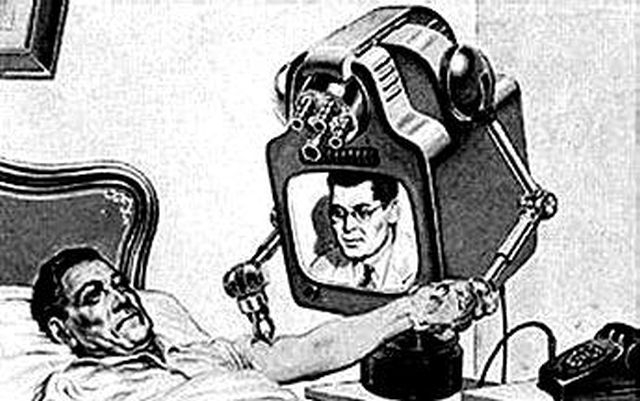Top Reasons to Choose Teledoctors for Telemedicine Solutions
Top Reasons to Choose Teledoctors for Telemedicine Solutions
Blog Article
Teledoctors: Linking the Void Between Individuals and Doctor
The emergence of teledoctors represents a substantial change in the healthcare landscape, supplying options to long-lasting accessibility issues dealt with by carriers and clients alike. By integrating telemedicine right into typical methods, health care systems can get to remote and underserved populations, offering critical clinical appointments without the obstacles of distance and travel. This paradigm change not just improves patient interaction but likewise maximizes resource appropriation for companies. Nonetheless, the prevalent fostering of teledoctors increases essential questions concerning the sustainability of such methods and the ramifications for future medical care delivery. What challenges lie ahead in guaranteeing this version's effectiveness and equity?
Rise of Telemedicine

The increase of telemedicine is likewise sustained by the requirement for cost-effective medical care. Medical care systems worldwide are under stress to decrease expenses while preserving high quality treatment, and telemedicine supplies a sensible service. By lessening the requirement for physical sees, telemedicine reduces above prices for medical care centers and eventually reduces the financial concern on clients.
Additionally, the COVID-19 pandemic served as a stimulant, increasing the fostering of telemedicine practices. Social distancing procedures and the need to lessen direct exposure threat demanded a change in the direction of remote examinations, motivating regulatory bodies to support and adapt telehealth solutions. This shift has not only proven telemedicine's efficiency however also its prospective to progress as a staple part of modern-day medical care systems.
Benefits for Patients
Mainly, telemedicine enhances ease of access, permitting people in underserved or remote locations to speak with healthcare suppliers without the need for comprehensive travel. Telemedicine additionally offers people the comfort of getting medical guidance and therapy from the convenience of their homes, decreasing the time and expense linked with traveling to a healthcare center.
Moreover, telemedicine supports connection of care by promoting routine follow-ups and monitoring, which are vital for managing chronic conditions. Clients can quickly set up visits and accessibility medical care services outside traditional office hours, fitting their hectic way of livings. This adaptability brings about enhanced individual interaction and adherence to therapy strategies, potentially causing much better health results.
Furthermore, telemedicine can aid minimize the risk of infection transmission, an issue increased by the COVID-19 pandemic. By lessening the demand for in-person visits, individuals can prevent congested waiting rooms and decrease direct exposure to contagious illnesses. Eventually, telemedicine empowers clients by supplying timely, efficient, and individualized healthcare services.
Benefits for Providers
For healthcare carriers, telemedicine offers significant advantages that boost the performance and reach of their method. By leveraging digital modern technology, providers can prolong their services to a more comprehensive market, consisting of those in remote or underserved locations. This not only minimizes geographical obstacles however also enhances person retention and procurement by making medical care extra accessible.
With telemedicine, the requirement for physical space decreases, allowing companies to conserve on real estate and operational expenditures. This flexibility can lead to Discover More enhanced person consultations per day, thereby boosting income capacity.
Telemedicine likewise fosters a more collaborative atmosphere for healthcare carriers. teledoctors. It enables smooth sharing of patient information amongst experts, improving diagnostic precision and therapy outcomes. In addition, digital platforms can incorporate with digital wellness documents (EHRs), improving data accuracy and enhancing management tasks
Moreover, telemedicine improves individual fulfillment, which is critical for provider track record and success. By offering prompt and hassle-free treatment, companies can enhance person commitment and involvement, further strengthening the provider-patient relationship.
Conquering Obstacles
While telemedicine offers countless benefits for medical care companies, it likewise offers challenges that require careful consideration. Healthcare providers must adhere to rigorous laws like HIPAA to safeguard sensitive info, consequently requiring investment in safe systems and ongoing team training. teledoctors.
One more difficulty is the electronic divide, which can impede accessibility to telemedicine services. Not all patients have equivalent accessibility to the required innovation or web connectivity, specifically those in country or underserved locations. This variation can exacerbate existing medical care inequalities, making it essential for suppliers to check out different services, such as collaborations with community companies, to bridge this space.
Furthermore, there are constraints in conducting checkups remotely. Particular look here conditions require in-person assessment, highlighting the requirement for a hybrid design that incorporates telemedicine with typical visits. Suppliers have to navigate these obstacles by establishing methods to recognize when telemedicine is suitable and guaranteeing smooth transitions in between in-person and digital treatment.
Future of Medical Care
The future of medical care is poised for a transformative development, driven by the fast combination of technology and development. This not just improves client ease but additionally expands access to healthcare, especially in underserved and rural locations.
Expert system (AI) and maker understanding are also readied to play critical roles. These modern technologies can examine substantial quantities of information, offering predictive understandings into person wellness, enhancing diagnostic accuracy, and individualizing treatment strategies. AI-driven tools can enhance medical care providers' capabilities, bring about more educated decision-making and far better patient end results.
In addition, wearable modern technology and Internet of Clinical Things (IoMT) devices are revolutionizing person engagement and proactive health monitoring. These devices allow continual health tracking, permitting early discovery of prospective issues and timely treatments.
As these technologies remain to breakthrough, they assure to develop a much more efficient, obtainable, and patient-centric medical care system, eventually bridging the space in between people and doctor. - teledoctors
Verdict
Teledoctors are changing healthcare by considerably boosting accessibility and efficiency with remote assessments. This innovation sustains clients in underserved areas by offering timely medical advice without requiring physical visits, hence enhancing individual involvement and continuity of care. Health care companies profit from more efficient time monitoring and boosted cooperation possibilities. Regardless of challenges such as governing concerns click this link and technical obstacles, the future of healthcare shows up significantly comprehensive and reliable due to the combination of telemedicine right into traditional treatment models.

As telemedicine proceeds to reshape healthcare shipment, patients stand to get dramatically from this change. Mostly, telemedicine improves ease of access, permitting patients in underserved or remote locations to get in touch with healthcare service providers without the demand for comprehensive traveling. Telemedicine likewise uses patients the benefit of getting medical suggestions and therapy from the comfort of their homes, decreasing the time and cost linked with traveling to a health care facility.
Ultimately, telemedicine equips people by providing prompt, effective, and individualized healthcare solutions.
Report this page